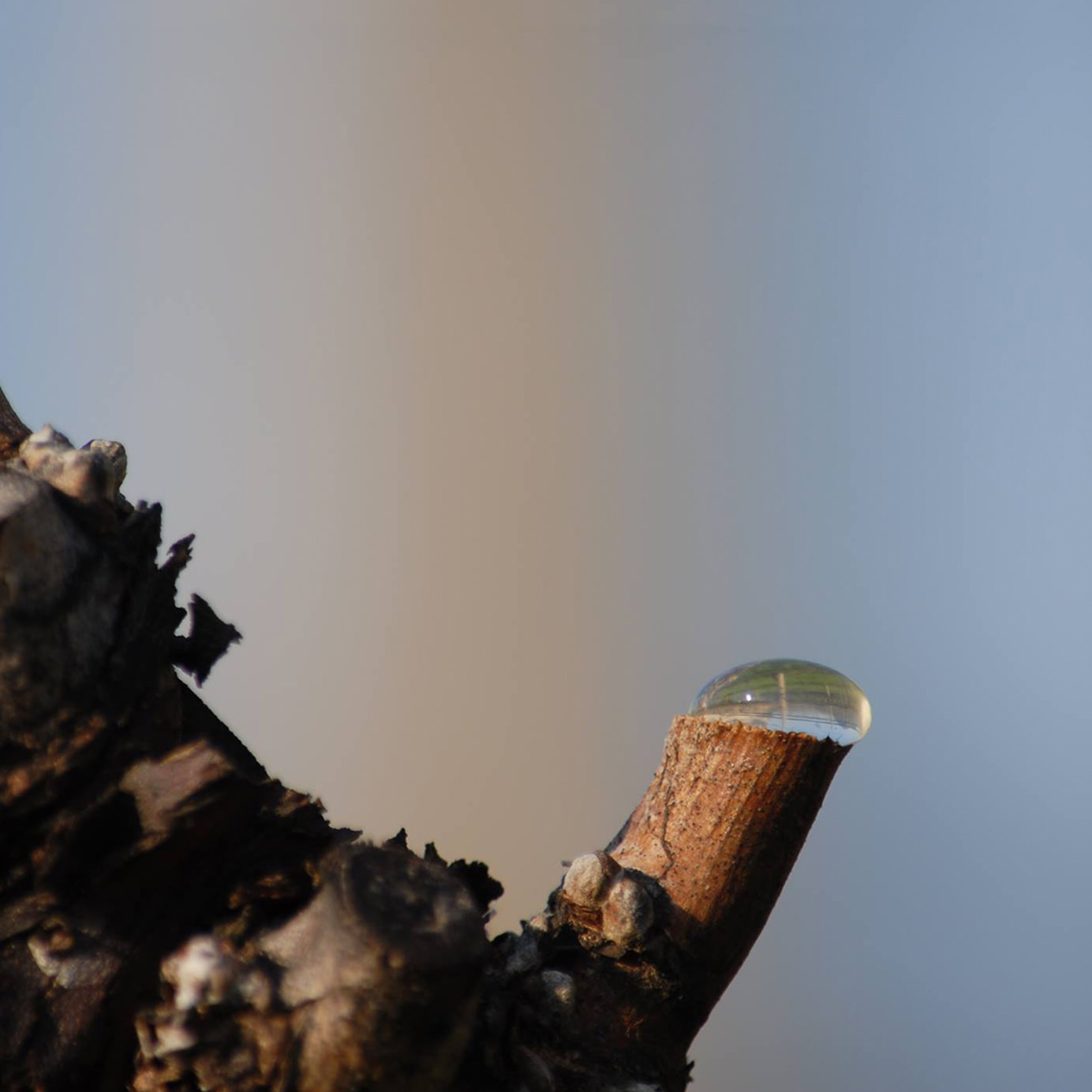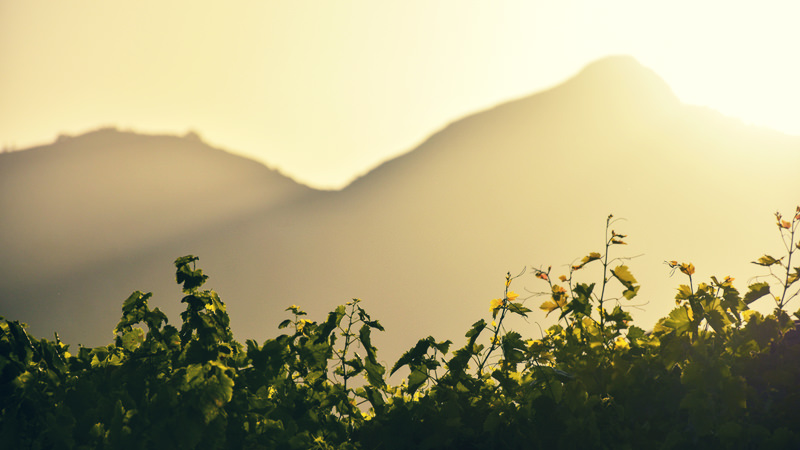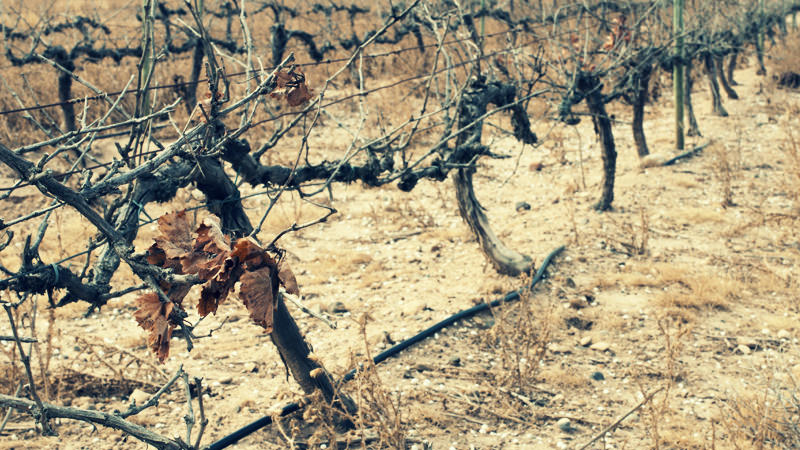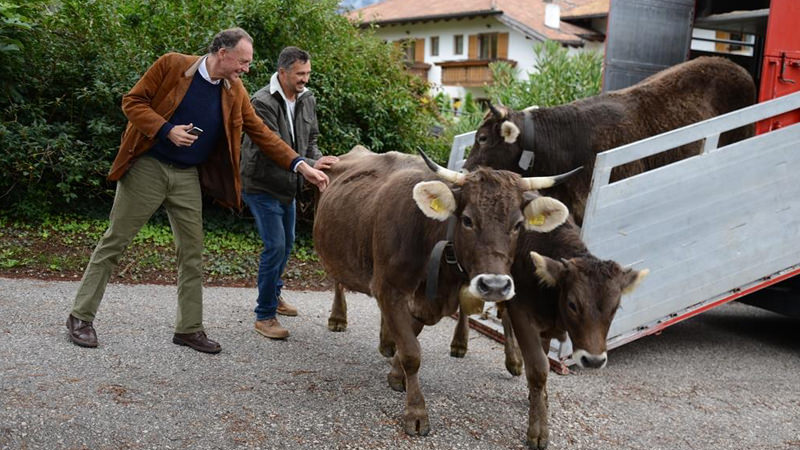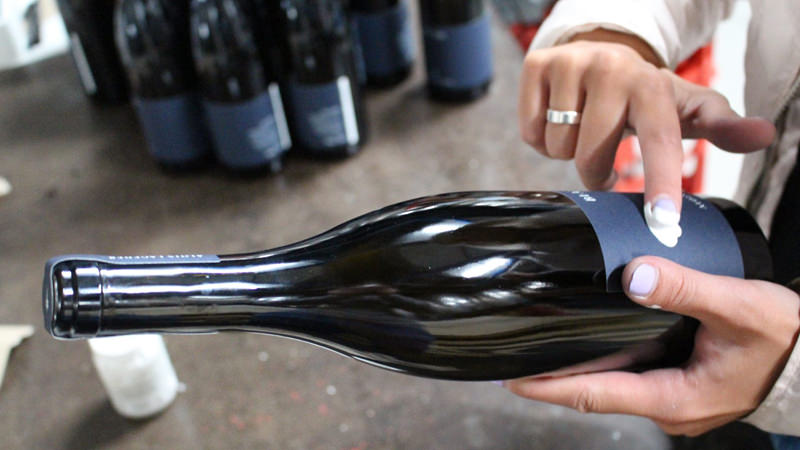I’m drinking Hennessy Paradis Imperial at the Hennessy headquarters in New York City and it’s luminous. Light yet structured, strong yet elegant, the Cognac is a blend of liquids up to 130 years old (it takes around nine bottles of wine to make one bottle of cognac). The problem is, there will never be another Cognac like the one I’m drinking. And a big part of that has to do with climate change.
“I don’t know what side of the equation you’re on, whether you believe in global warming or you’re wrong,” Jordan Bushell, a national brand ambassador for Hennessy, tells me. “It’s happening, and we know it because we look for light, bright, acidic wines to distill.”
Those light, bright, acidic wines are becoming harder and harder to find. The best wines to make Cognac are around 6 to 9 percent alcohol, but the alcohol content of wine is largely dependent on the temperature in which the grapes are grown. A warmer climate means the grapes will have more sugar, which directly translates to a higher final alcohol content. “In the last 10 years they’ve hit 10 percent alcohol in some places,” says Bushell. “That’s not good for us.”
It’s not just Cognac that’s feeling the heat, either. Bushell is joined by more than 90 percent of scientists united in the belief that climate change has already started to transform the agricultural landscape, including the world’s most renowned grape-producing regions. Estimates vary, but there’s a chance that planet Earth could warm by an average of 3.6 degrees Fahrenheit by 2020.
This will have dramatic consequences for wine. Too warm of a growing season means grapes that are high in sugar and low in acid, which makes for unbalanced and unstructured wines. And if the weather gets hot too early in the season, the grapevines bud too soon and can be destroyed by late hail and frost. The sugar-to-acid ratio and the timing of the harvest are crucial aspects of winemaking — aspects that are directly threatened by global warming. One 2013 study went so far as to project that two-thirds of today’s wine regions won’t be viable grape producing regions in their current state by 2020; they will simply be too hot.
This has left some winemakers at a loss. “We’re seeing very erratic patterns, which makes it hard to understand what is going on,” Jeremy Seysses, owner and winemaker at Domaine Dujac in Burgundy told Eater. It also led 18 leading winemakers in the Journal of Wine Economics in 2016 to call recent vintages “average — certainly not great — vintages” in a field report, and to speculate about what the future might hold.
But others — including the distillers at Hennessy and other winemakers I spoke with — are looking for creative ways of coping.
Climate Change in Winemaking
The vast majority of scientists agree that some degree of climate change has already occurred, and more is inevitable. Data from the National Oceanic and Atmospheric Administration shows that the planet has been hotter than the baseline average for 627 months in a row, and there hasn’t been a month that was cooler than the baseline average since 1964. In addition to the overall rise in temperatures globally, global warming creates extreme weather like heatwaves, droughts, floods, and storms.
Vineyard owners and winemakers are especially susceptible to these kinds of conditions. The most popular wine growing regions are in temperate climates — think Burgundy, Bordeaux, Napa Valley, Oregon, along the Mediterranean, and on the southern coast of Australia. That’s not a coincidence. Vitis vinifera grape varieties — the ones that make classic wines — thrive between around 53 and 72 degrees Fahrenheit. Pinot Noir, one of the most treasured and fragile varieties and the one that makes Burgundy famous, does best when exposed to the short temperature window of 57 and 60 degrees Fahrenheit.
For a grape like Pinot Noir, climate change spells disaster. With such a small temperature window, even minor climate change could make areas famous for their Pinots too hot. It’s a larger problem, though. Over the next 20 to 50 years, vineyards around the world will undergo a drastic change, Benjamin Cook, a climate scientist at Columbia University’s Lamont-Doherty Earth Observatory, tells me in an email. In 2016, Cook led a study that analyzed weather data and vineyard records going back to 1600. In his study, he found that France’s overall temperature rose around 2.7 degrees Fahrenheit throughout the 20th century.
But France is one of the luckier locations, says Cook. “Places that are already dry and warm will likely face some of the biggest challenges in the coming decades as conditions get progressively drier and hotter,” Cook explains. “This includes many popular wine growing regions like the Mediterranean and Australia.”
Climate change also poses a huge threat to one of great wine’s most important factors – terroir. The concept of terroir, or the role played by place in winemaking, includes everything from soil to tradition to the environment. But it’s perhaps most obviously influenced by climate.
“Today, as in the past, climate is clearly one of the most important factors in the success of all agricultural systems, influencing whether a crop — including winegrapes — is suitable to a given region,” Gregory Jones, a professor of environmental science and policy at Southern Oregon University, claims in a piece he wrote for Earth Magazine in 2014 titled “Climate, Terroir and Wine: What matters most in producing a great wine?” Climate, Jones writes, is “arguably the most critical environmental aspect in ripening fruit to its optimum quality to produce a desired wine style.” Landscape and soil are only the mediating factors in the relationship between climate and the grapevine, Jones writes. A change in the climate is a change in the terroir.
This means that the very thing that makes wine from certain regions unique is changing. Regions like Burgundy and Napa that made their names on their terroir will no longer be able to advertise the very factor that justifies their astronomical prices. A change in terroir would mean whole designated regions of origin (AVAs in the U.S., AOCs in France) would either need to be moved or take on a new meaning.
The shift in the regions would be irreversible, Sean Sublette, a meteorologist at Climate Matters, tells me in an email. In California, droughts will get worse, and the summers will get hotter in the northern European wine regions. “As a general rule, summers will be longer and winters will be shorter,” Sublette says. “That is already starting to show up in the data. The last frost of the spring will tend to be earlier in the year, with the first frost of the fall coming later.” Grape regions will have to move north by dozens or even hundreds of miles, Sublette says, to get to cooler weather.
One example of how climate change will move regions is Australia. Kelly Savoie, the communications manager of the American Meteorological Society, pointed me to a study published in the AMS Journal of Applied Meteorology and Climatology. The study examined wine production in Australia by specific region and accounted for minute climate changes specific to vineyard regions. The study found that even in the microclimates of Australia’s top vineyards, which are angled to best utilize sunlight and natural irrigation, global warming was having an impact.
The study concluded that by as early as 2030, some of Australia’s northern wine regions would no longer be viable for fine wine production. Regions like Swan District were most vulnerable, projected to experience up to 100 percent cost to quality by 2050. According to the study, global warming will result in a “change of identity for the wine industry.”
Coping With Climate Change
There are a number of vineyard adjustments that can be made to mitigate the effects of climate change. Vineyard owners can modify the row orientation for better heat management, for example. They can also improve trellising and irrigation. And there’s always planting at higher elevations.
Irrigation allows farms and vineyards to maintain yields during droughts and ameliorate losses. Planting on north-facing slopes can help reduce heat stress. “Ultimately, land management will likely be increasingly important as the climate shifts,” says Cook.
But land management can only do so much. Cook’s study found that every time the temperature increases by a degree centigrade (1.8 degrees Fahrenheit), grape harvests must be moved up by a week. Vineyards can’t maintain earlier and earlier harvests forever. There will eventually be a breaking point where the grapes simply aren’t ripe early enough, or are ripe too early, and are ruined by a late-season frost.
But one winemaker believes he has found something of an answer to climate change in a counterintuitive, if increasingly popular, method: biodynamics. Alois Clemens Lageder, a sixth-generation winemaker at the Alois Lageder winery in northern Italy, believes that the answer to making world-class wines in an increasingly hotter climate might be more production-oriented and less meteorological.
The effects of climate change are very familiar to Lageder from working his family’s vineyards. “Over the last 10 years we have been observing a faster loss of acidity in the grapes right before harvest,” Lageder says. It’s most evident in the Pinot Grigio and Chardonnay, which need high acidity “to assure the freshness of our wines and to produce wines with a certain liveliness and tension,” Lageder says.
And it’s that tension and liveliness that climate change threatens to eliminate. What to do? The answer, Lageder says, is biodynamic farming, as well as slightly altered production methods. Biodynamic farming, the practice of using organic and natural products, avoiding chemicals, having a diverse variety of plants around the vines, and bringing in animals to naturally manage overgrowth, is one way to improve soil quality and vine fertility despite a more challenging climate. Healthier soil lessens the potential damage that climate can do.
On the production front, Lageder is making white wines with skin and whole stem maceration. The technique requires fermenting the grapes with the skins, seeds, and stems, instead of the more common method for white wine production of solely fermenting the juice. That increases the perception of acidity, as well as “tension, and vivacity” in the final wine, Lageder says.
Other wineries are relying on the protection of their regions with more dramatic measures. In Burgundy, every vineyard in the region will be protected by a hailstone shield that will protect ripe grapes from late-season hail that can destroy entire harvests. The technique is called cloud seeding, and it involves shooting silver iodide particles into the air from 125 generators every time the risk of hail reaches 40 percent.
Then there’s Hennessy. The company has a full research and development team working on ways to continue to produce quality Cognac as the climate changes.
“It’s not like we can go to Germany and buy their grapes or plant fields farther north,” says Bushell, the brand ambassador I spoke to. “No, we have to use the grapes from Cognac; we have to grow them in a certain way. So we are stuck in that way, but through restriction comes innovation, so that’s where we’re going to go.”
In the future, Hennessy may have to adjust which grapes are used in the majority of the production. The company will also continue to harvest earlier to ensure acidity.
It’s not a long-term fix. But for now, it’ll have to suffice.
